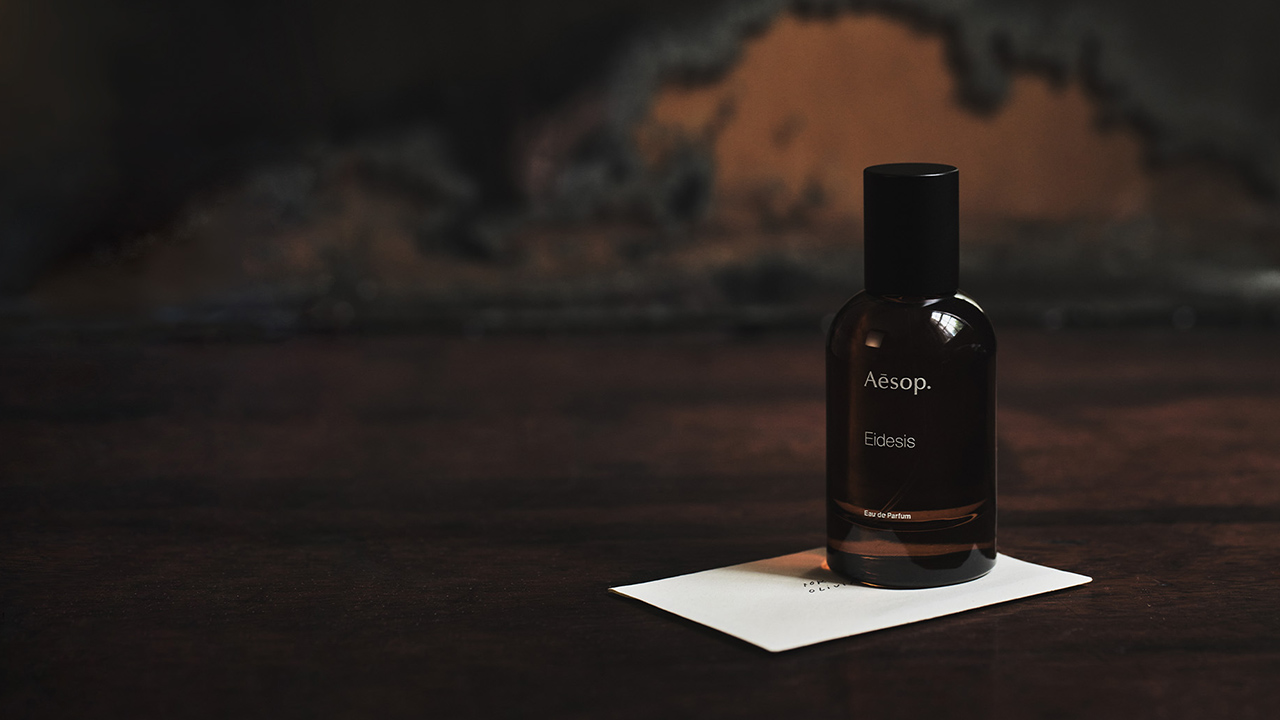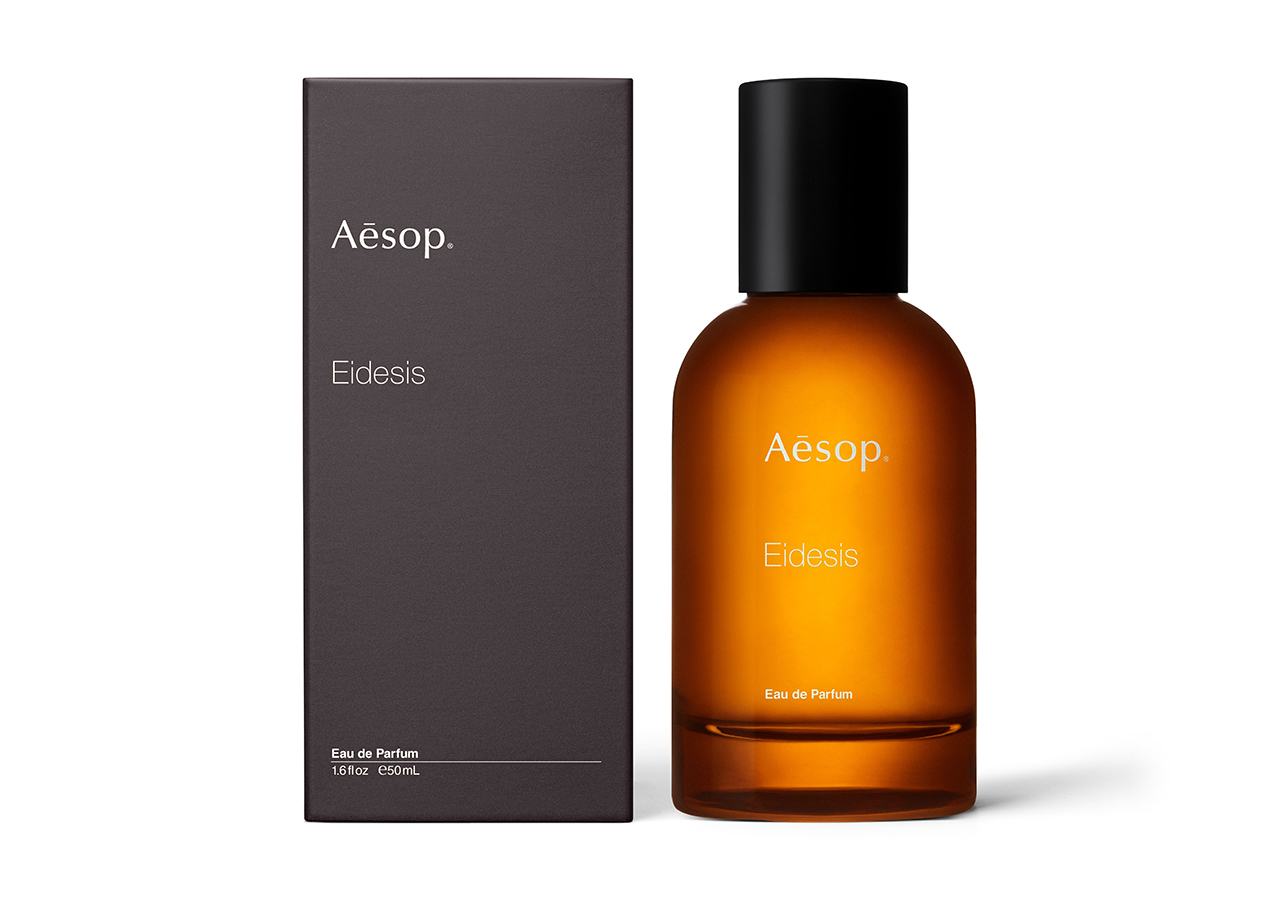Everything

Australian skincare brand Aēsop has a reputation for making the tactile pleasurability of their products – from cleansers and hydrators to aromatic experiences – equally cerebral in their stimulation and so it is with their new fragrance, Eidesis.
An ode to the myth of Narcissus and Echo, Eidesis is the latest in the Othertopia line of scents created for Aēsop by French perfumer Barnabé Fillion. A study in the concept of space, the first three Othertopia creations Miraceti, Karst and Erémia – were inspired by the liminal, and the interstitial, where one space meets another. These were, for all their abstractness, still embedded in tangible ideas of physical space. For his latest addition to the collection, Eidesis, Fillion goes on a journey within.

“In olfactory terms, in comparison to the first three fragrances in the collection, I think Eidesis is the more abstract and maybe the more emotional,” Fillion tells ICON. “Every perfume can of course be emotional in different ways for different people, but somehow I think there is something very universally important and moving about that concept of the mirror – everyone reacts and interacts with the image of their own self. It is about the concept of connecting with yourself.”
A melange of woody notes, Eidesis opens up with petitgrain, black pepper, and sandalwood before moving into deeper notes of cedar and vetiver. Whereas most fragrances follow a linear set up – a first, initial opening, a middle and end, Eidesis has a curious overlapping effect as the notes play one on top of the other. Or, as Fillion, like ripples in a pond.

“All of the ingredients in Eidesis have been added via this concept of reflection and refraction, so while the notes may be familiar, you may not recognise them directly,” says Fillion. “The sandalwood may be recognisable because it’s exaggerated in this formulation, but still not too much because I worked on the sandalwood with the idea of transparency. Eidesis is not a fragrance that has strong temporality or chronology of change, it’s one scent that develops into a bigger scent, little by little, like a ripple in a pond.”
If you’re unfamiliar with the myth of Narcissus, let me sum it up: in Ovid’s Metamorphosis, a young woman named Echo falls in love with the most beautiful man in the world, Narcissus. But Narcissus was not interested in her love and rejected her advances. Nemesis (or Aphrodite) punished Narcissus by causing him to fall in love with his own reflection in a lake. And there he pined, until nothing remained and he was transformed into a flower: the narcissus.

On the skin, Eidesis is a contradictory experience. Personally, black pepper and cumin are the two primary notes that present themselves but on a colleague, all they could catch for the first several hours was the richness of the sandalwood. Because of the lack of linearity – perhaps the better way to describe the fragrance is its circularity, like those aforementioned ripples – no single note pushes forward in the same way. Eeidesis, Fillion says, is an aromatic mirror interacting with your own skin. “When you try Eidesis on the skin, it changes a lot depending on the wearer. It will be unique for everyone because it interacts so much with the individual’s own skin and body temperature. It relates back to that idea of seeing your reflection in the mirror – this idea of self-evaluation and distortion.”
Psychoanalytical and pop cultural interpretations aside, the story of Narcissus is at its core a journey into inner worlds. This diving into the inner worlds, as French philosopher Gaston Bachelard states, can be seen as a journey into release through the pleasure of dreams. “There are reveries so deep, reveries which help us descend so deeply within ourselves that they rid us of our history. They liberate us from our name. These solitudes of today return us to the original solitudes.” Aēsop similarly explores this perspective of the legend.
“We wanted to explore this by building a recognisable landscape in each perfume, and suddenly opening the window to something else – a reverie, a memory, or something much more abstract, depending on how the wearer responds to the fragrance,” explains Fillion. “When people experience the Othertopias fragrances, we hope the wearer will be transported to a much more captivating territory, where you see beyond your surroundings and feel nourished by whatever new space you unlock.”